Last updated on
Explore simple and effective ways to declutter paper, transforming overwhelming stacks into an organized space.
Drowning in a sea of paper clutter? Rest assured, you’ve landed on the right page.
This article will guide you through a step-by-step process to declutter and organize your paper mess efficiently.
From sorting and categorizing to maintaining a systematic approach for future paperwork, we’ve got it all covered.
Stay tuned to transform your chaotic paper pile into a neatly organized system that’s easy to maintain.
Key takeaways:
- Sort and categorize all paper sources.
- Identify and prioritize important documents.
- Ask four key questions to decide what to keep.
- Use the “Trash, Recycle, Shred, Keep, Action Needed” sorting system.
- Organize paperwork by category and establish a filing system.
Table of Contents
Reasons for Paper Clutter
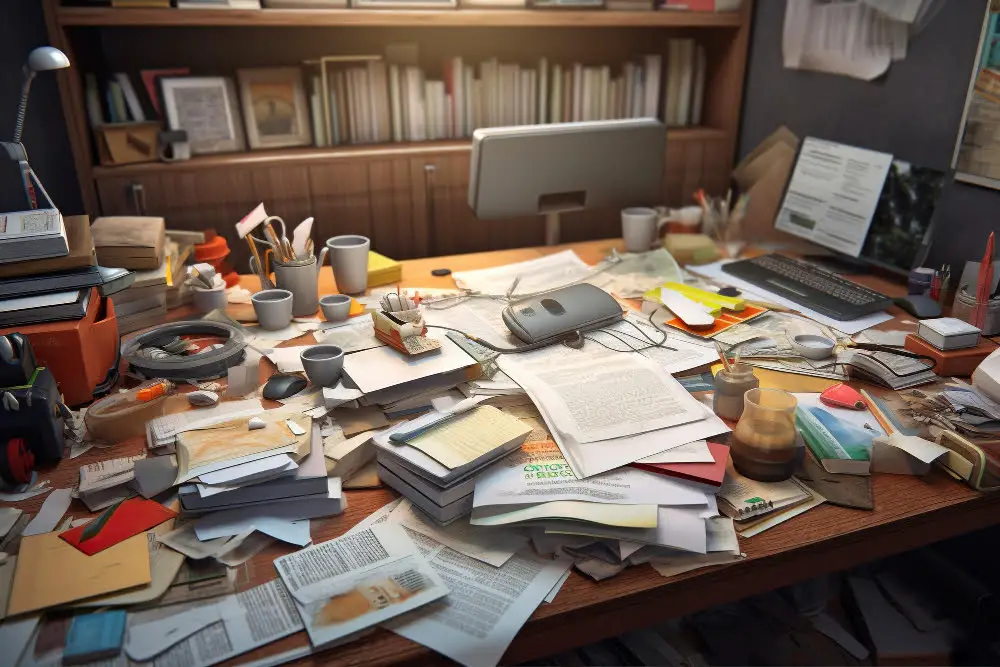
An inundation of paper clutter surfaces from various areas. Bills, receipts, magazines, bank statements, to name a few, continually add up over time without a proper organizational system.
The tendency to keep items ‘just in case’ also contributes to the pile. Further, the digital world, in contradiction, produces its fair share of physical clutter, with print-outs and copies often left unsorted.
Finally, the influx of unsolicited mail or leaflets imparts a significant chunk to the growth of the stack. Acknowledging these sources is the first constructive step towards a clutter-free environment.
Identify All Paper Sources
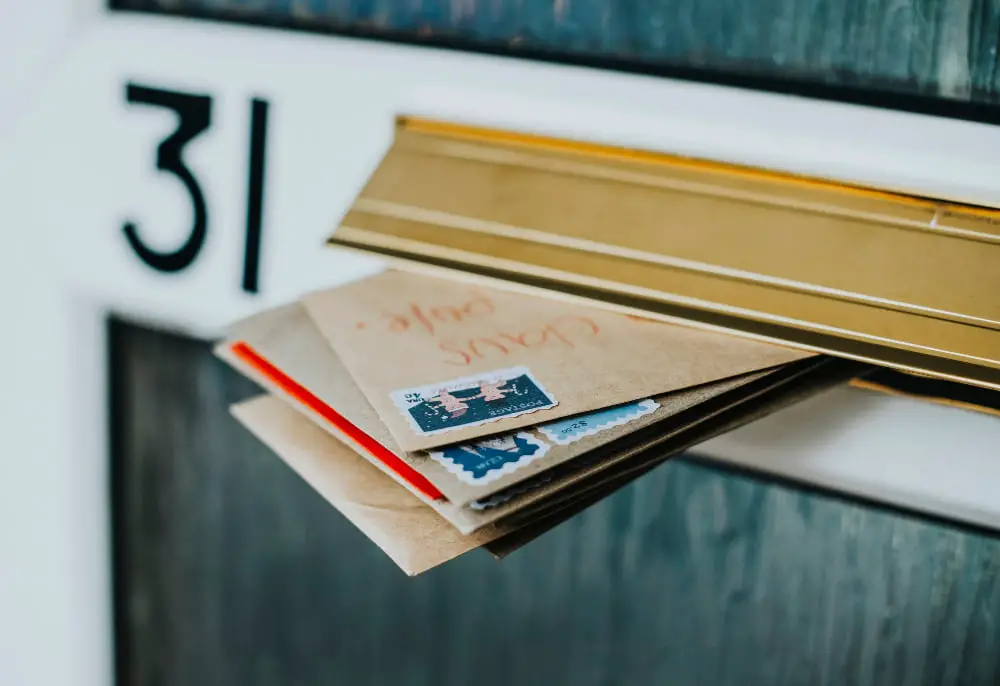
It’s crucial to start by recognizing every location where papers accumulate.
This could range from an overflowing mail tray and stuffed-aside school reports, to the forgotten receipts in wallet pockets and unwrapped parcels lying in the attic.
Be thorough in your search, and don’t forget the random paper-filled drawers and cupboards.
Identifying all these sources will help you gain a clear picture of where most of your paper clutter is coming from and learn how to address them effectively.
This initial assessment stage sets the stage for a well-organized and systematic decluttering process.
Identifying Important Documents

Always begin by conducting a thorough inventory. Here, prioritize key documents: legal papers, bills, receipts, medical records, and tax-related documents.
Look for things like birth and marriage certificates, property deeds, vehicle titles, and insurance papers. If it’s not already physically separated, consider giving this category its own dedicated space for ease of access.
Now consider documents needed less frequently but still essential. This might include warranties, product manuals, diplomas, and past tax returns.
Lastly, remember that some items have sentimental value – old photos, letters, and children’s artwork. They might not seem ‘important’ in the traditional sense, but they’re precious and deserve a special place in your organized space.
The goal here isn’t to keep everything, but to identify and retain what is truly necessary.
Four Questions to Decide What to Keep

Begin by asking these key questions to help guide your decision-making process:
- Is it a legal document? Legal documents such as birth certificates, social security cards, and marriage licenses should always be kept.
- Will it be needed for tax purposes? Generally, tax documents and related receipts should be kept for seven years.
- Does it contain sentimental value? For some, photos, cards, and certain correspondences hold irreplaceable sentimental value.
- Will it be referred to regularly? If it’s an item you need to reference often, such as a manual for an appliance, keep it.
This process helps you clear unnecessary clutter and keep only what is truly needed or cherished.
Sorting Paperwork: Tips and Techniques

Begin the sorting process by creating five categories: Trash, Recycle, Shred, Keep, Action Needed.
Separate all paperwork into these categories, eliminating unnecessary items on the spot. The goal is immediate reduction.
Make sure to check each paper before tossing it, identify any potentially necessary information. Sorting is not just about elimination but also about identifying the relevant and essential information hidden in the mess.
For complex items that require careful consideration or urgent action, use the ‘Action Needed’ pile. On the other hand, you can create a ‘Keep’ pile for tax records, legal documents, and family records that you will use to build a coherent filing system later.
Adopt a decisive mindset for this sorting process. Avoid potentially harmful procrastination – if unsure, go for the ‘Action Needed’ category and revisit later. Remember, the aim is decluttering and efficient organization, every paper counts.
Ways to Organize Paperwork

Firstly, categorize all documents. Divide them based on their type such as bills, receipts, medical documents, bank statements, and others.
Secondly, design a filing system using labels to easily identify each category. You may use color-coding for quicker retrieval. Also, consider document trays for easy in-out paperwork access.
Store infrequently used bulkier items in labelled boxes on higher or lower shelves. Utilize binders for information you access regularly like manuals and recipes.
Furthermore, establish a routine for dealing with new papers to maintain your organized system. Dispose of irrelevant items immediately and file important documents promptly.
Additionally, consider a digital organization system to keep scanned copies of important documents. Remember to back up your digital files to enhance security against loss. Use searchable PDFs for easy accessibility of digital files.
Creating a Filing System
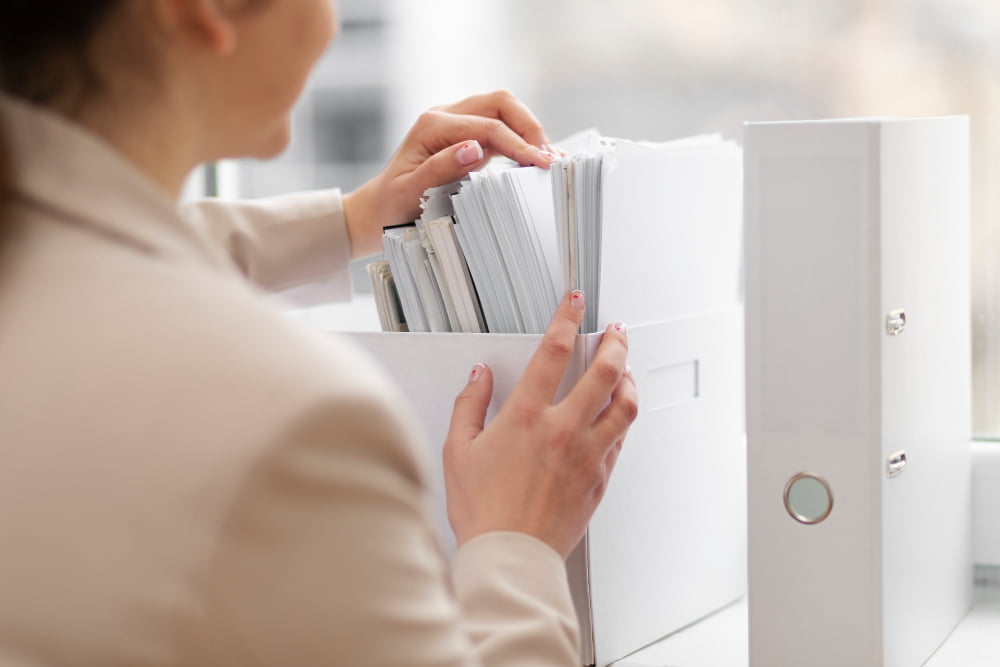
Begin by labeling file folders for each unique category, such as utility bills, insurance documents, tax returns, or medical records.
Use a physical filing cabinet or designated drawer for storage.
Assign a color to each category for easier identification and retrieval.
At the same time, consider a dedicated and separate section for frequently accessed paperwork.
Once categorized, chronologically organize each paper within its respective folder. For easier access and an added layer of organization, consider reverse-chronological order, keeping the most recent documents at the front.
With these straightforward steps, a streamlined filing system is within reach.
Setting Up an Effective Filing System
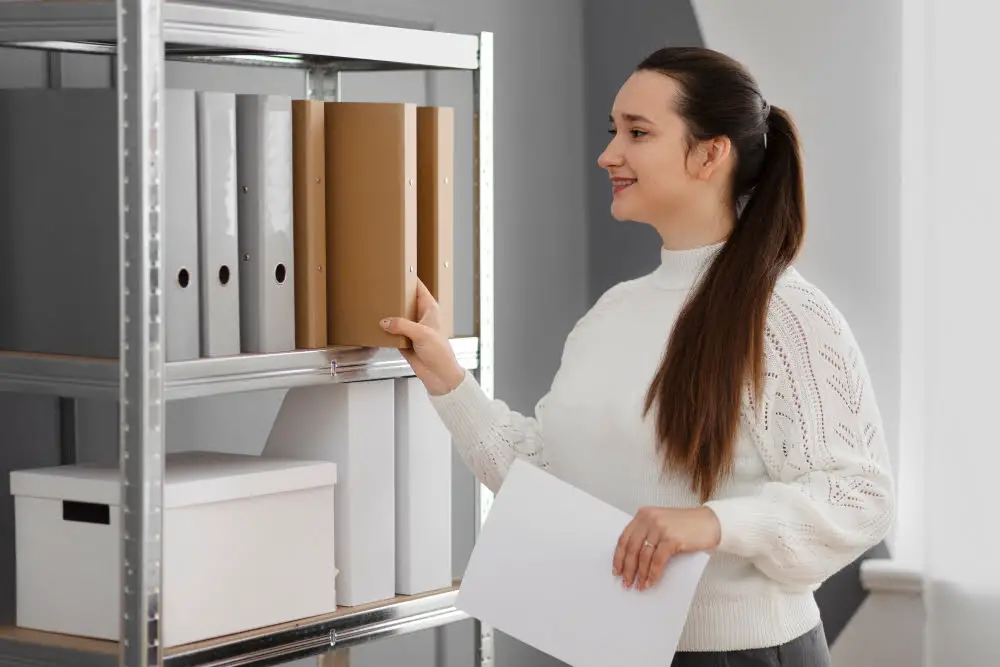
For a stress-free approach to paperwork, it’s essential to a have a tailor-made filing system.
Start by categorizing documents into broad groups like bills, bank statements, medical records, and tax documents.
Then, break down these categories further, for instance, sort bills by month or service provider.
Use a color-coding system for easy identification.
Make sure to use durable, clearly labeled folders.
Arrange them alphabetically or chronologically in a filing cabinet or box.
This way, you always know where to find a document and where to store new ones.
For infrequently accessed documents such as warranties or annual tax returns, consider using archival boxes.
Remember, an effective filing system is easy to understand and use, ensuring you’ll maintain it over time.
Finally, review your filing system periodically.
Update and modify it as needed to keep up with changes in your lifestyle or financial situation.
Any changes should simplify the process, not complicate it.
This routine will save you time and reduce the potential for paper chaos in the future.
Digital Tools for Paper Reduction
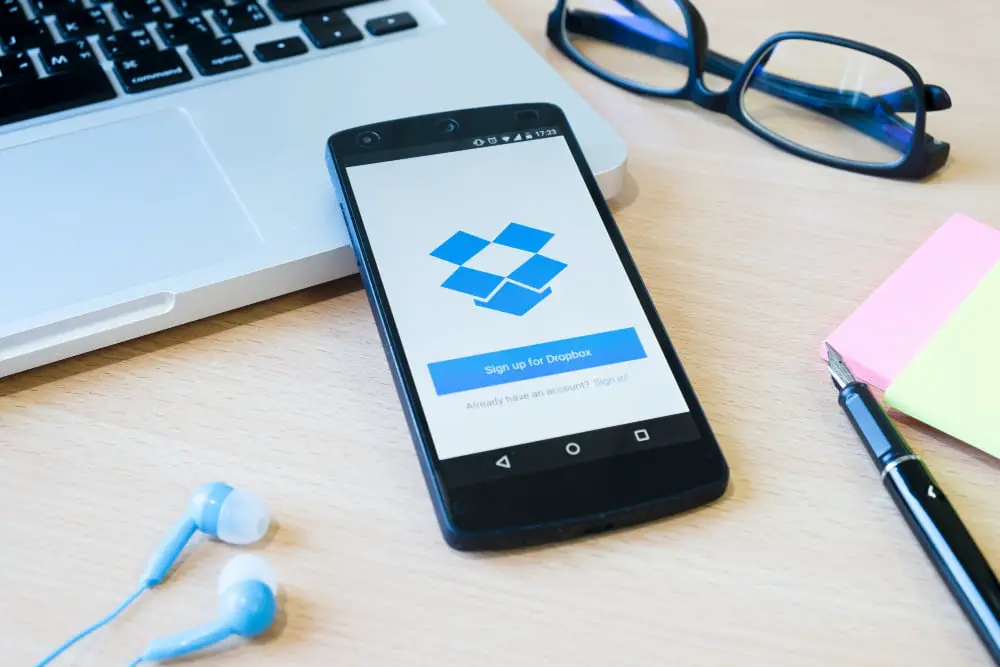
Embracing digital mediums has the potential to drastically minimize the influx of physical paper. Investing in a good scanner can digitize all necessary paperwork, making them easily accessible and searchable on your computer or cloud storage service.
While cloud storage offers a secure and easily accessible platform, ensure to regularly backup these documents in a portable hard drive for added safety.
Exploiting toolbars like Evernote, Google Drive, or Dropbox, can allow you to store various documents ranging from bills, receipts, contracts, to important notes and even children’s artwork.
Similarly, opting for electronic bills or e-statements from banks, utilities, and service providers can significantly reduce mail clutter.
Bear in mind that privacy is critically important when going digital. Make sure to use strong, unique passwords and two-step verification where possible. By digitizing your life, not only will you be reducing paper clutter but also contributing to a greener planet by saving trees.
Solutions for Reducing Junk Mail

Immediately decrease incoming paper clutter by reducing your amount of junk mail. Kickstart this process, firstly, by unsubscribing from unwanted catalogs, newsletters, magazines, or newspapers. Typically, there’s an option to do this on the sender’s website. A service like DMAchoice or CatalogChoice can also help cut the cord with many of these senders all at once.
Secondly, redirect your bills to an online platform. Most service providers offer an e-billing option. This variation not only protects the environment but also helps keep your space tidier.
Lastly, consider placing a “no junk mail” sign on your mailbox. This will prevent unaddressed advertising mail from stuffing your mailbox. Remember, every junk mail item prevented is less clutter to deal with.
Maintaining a Clutter-free Paper Space

The key to sustaining a clean workspace lies in upkeep.
Dedicate about 15 minutes at the end of each day to sort through new papers. Discard unneeded items immediately and categorize the rest accordingly. This practice helps alleviate paper piles from reoccurring.
Also, remember to review stored papers periodically. Some documents such as utility bills and bank statements may outlive their usefulness over time and can be safely discarded. This periodic pruning helps ensure that your filing system remains relevant and lean.
Integrate this approach into your daily routine and the daunting task of managing paper clutter will become second nature. This consistency will reward you with a persistently tidy space, proving that maintenance is truly the backbone of a clutter-free environment.
FAQ
What is the 20 rule decluttering?
The 20/20 rule in decluttering suggests that if an item can be replaced for under $20 and within 20 minutes, it should be considered for disposal.
How do I stop hoarding paperwork?
To stop hoarding paperwork, switch to online bill payments and opt for paperless billing while also choosing to receive bank statements and receipts in digital formats.
What does Marie Kondo say about paper?
Marie Kondo suggests categorizing paper into two groups: those that need to be preserved, further divided into frequently and infrequently used items, and those that need action.
How can the Four Box Method assist in decluttering paperwork?
The Four Box Method can assist in decluttering paperwork by creating designated areas for ‘Keep’, ‘Trash’, ‘Donate/Sell’, and ‘Undecided’ documents, thereby simplifying the process of sorting and organizing papers.
Can the KonMari method be applied to digital clutter?
Yes, the KonMari method can be applied to digital clutter by categorizing and honoring each digital item that “sparks joy,” while discarding or organizing the rest.
In what ways can decluttering paperwork improve productivity?
Decluttering paperwork improves productivity by providing a clear workspace, streamlined processes, easy access to important documents, and reduced stress and distraction.




